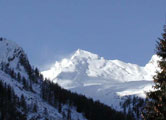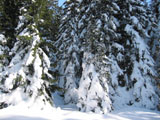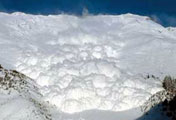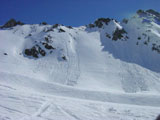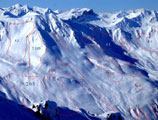 |
|
|
|
|
|
|
At elevations of 2000m in the Alps, snow covers the ground for nearly seven months, from mid November to the end of May. With increasing elevation, the period of time when there is a persistent snow cover increases. At around 3000m the nival zone is reached, where the snow stays all year around. |
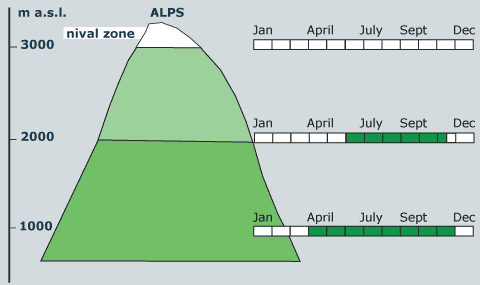 |
|
|
1 - Snow cover during a year at different altitudes in the Alps
|
||
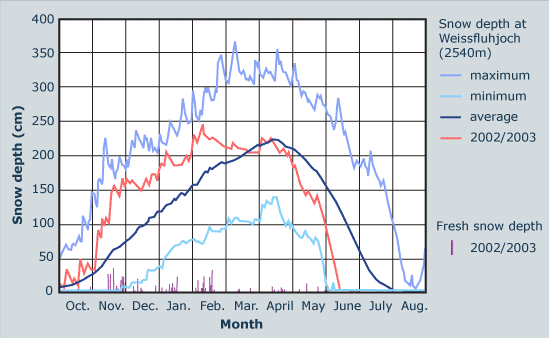
|
Usually at Weissfluhjoch, snow is present from mid-October to mid-July. The time point of the start of continuous winter snow cover, its depth and the beginning of snow melt differs considerably from year to year. |
|
|
|
||
|
|
| The local pattern
of snow on the ground is the result of precipitation and redistribution
processes. |
|
|
In localities of high wind speeds, as on the wind-ward side of ridges, snow is eroded and deposited in areas of low wind speeds, as in the lee of ridges. |
|||
| 3a and b - Wind drift.
Snow drifting from the ground occurs at wind speeds above 4-10 m/s. (64K
and 48K) Photos: S. Fehler, SLF |
4a and b - At the
leeward-side of any obstacle, wind speed is low and snow is deposited and
accumulates on the ground or, as in this case, on a roof. (56K and 52K) |
||
|
In the forest, the distribution of snow on the ground is determined by how much snow is intercepted by the crowns of trees. The amount of snow intercepted depends mainly on air temperature and the surface structure of intercepting branches. |
|||
| 5a and b - Interception
of snow on the branches of spruce trees. Around 30%
of the falling snow is intercepted by evergreen trees such as spruce.
(188K and 76K) |
6 - Snow depth
along a profile from an opening towards a spruce tree reveals the heterogeneous
distribution of snow as a result of interception by tree crowns. (160K)
|
||
| Does
the snow profile in Fig. 6 correspond to the 30% rule? |
|||
|
Find the slope inclination where avalanches may release. |
||||||
In very unstable situations avalanches may release at smaller slope angles!
|
||||||
|
Continentality is
a climatic effect influenced by the energy storage capacity of the oceans.
The oceans store thermal energy in warmer seasons and emit a part of this
energy in the colder seasons. With a longer distance from the coast
|
|
Continental climate is charactrerised by: |
Maritime climate is characterised by: | |
|
|
|
The snow cover constantly changes, not only in its duration and depth,
but also in its physical and chemical characteristics.
Hence it offers a constantly changing environment, dominating alpine ecosystems
for more than half of the year. The development of the snow cover and its dimensions vary quite considerably between winters. However, the local snow cover shows a relatively constant pattern in its temporal and spatial extensions. |
29 August 2011 |
||
| |
||
